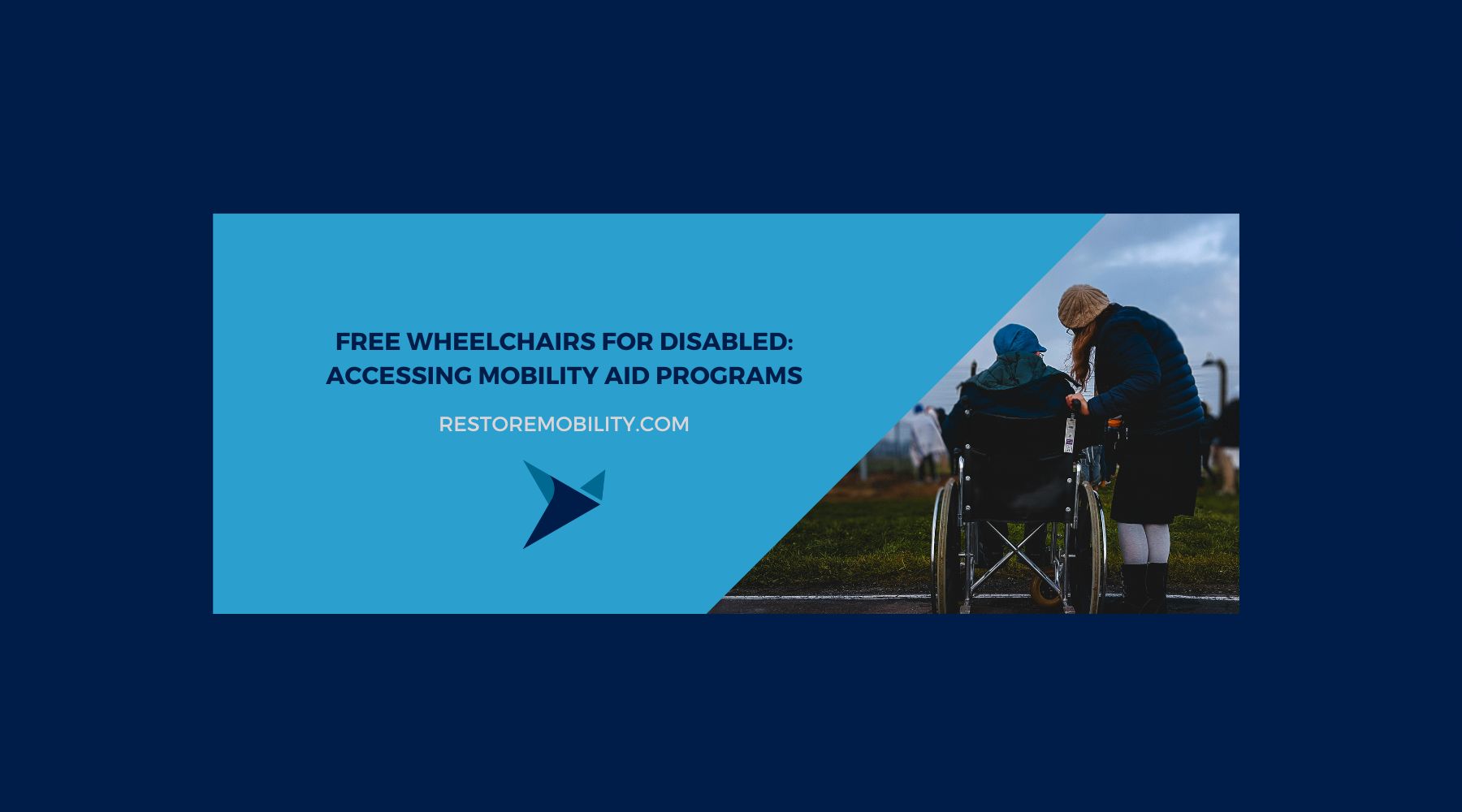Give us a call at 800-971-5369
Give us a call at
800-971-5369

Access to mobility aids like wheelchairs can significantly improve the quality of life for individuals with disabilities. Mobility is a fundamental human right, yet for many with physical limitations, it remains a challenge. Free wheelchair programs aim to address this by providing wheelchairs at no cost to those in need. These initiatives often stem from a combination of non-profit organizations, governmental schemes, and philanthropic efforts, with the goal of ensuring that physical disability does not equate to a lack of access to independence and participation in society.
Securing a wheelchair can be a financial burden, with advanced models often costing more than most can afford. Programs that offer free wheelchairs serve as a vital resource, breaking down financial barriers that can prevent individuals from obtaining an essential tool for mobility. Through these programs, users receive not just a piece of equipment, but an opportunity for enhanced personal freedom and an improved ability to engage with their communities.

Wheelchair accessibility is a crucial aspect in ensuring that individuals with disabilities can lead active and independent lives. Access to free wheelchairs is one facet of creating an inclusive environment.
Individuals with disabilities face a variety of mobility challenges based on their physical conditions. For instance, those with spinal cord injuries may have different needs than individuals with cerebral palsy or multiple sclerosis.
Offering free wheelchairs that cater to specific disabilities is essential to address unique mobility challenges effectively.

Governments enact laws to protect the rights of individuals with disabilities and ensure they have equal access to public spaces and services.
Legislation also often includes provisions for providing assistive devices, including free wheelchairs, to enhance mobility for those who cannot afford them. These laws are instrumental in breaking down barriers that prevent full participation in society for people with disabilities.
There are various entities dedicated to providing free wheelchairs to those in need. They range from government-sponsored initiatives to non-profit organizations and charitable foundations, each playing a critical role in facilitating mobility for disabled individuals.
Medicare: Medicare Part B covers the cost of wheelchairs as durable medical equipment (DME). To qualify, a doctor must declare the wheelchair medically necessary.
Medicaid: State Medicaid programs may also provide wheelchairs free of charge. Eligibility requirements and coverage options vary by state.
The Free Wheelchair Mission: This organization donates wheelchairs across developing nations and works through a network of partners.
Chariots of Hope: Chariots of Hope offers free wheelchairs on a loan basis, allowing recipients to use them as long as needed.

Wheelchair Foundation: They aim to deliver a wheelchair to every child, teen and adult worldwide who needs one but cannot afford one.
Jonas Brothers' Change for the Children Foundation: Provides various supports, including wheelchairs, for children in need across different programs.
Access to a wheelchair can significantly enhance the quality of life for individuals with mobility issues. This section details the specific criteria and application steps to obtain a free wheelchair.
To be eligible for a free wheelchair, individuals typically must fall under the following criteria:
Documentation required for proof of eligibility may include:
The process to apply for a free wheelchair generally includes these steps:
Find a Provider: Locate organizations that offer free wheelchairs for the disabled. This might include non-profits, hospitals, or government programs.
Submission of Documents: Complete their application form and submit all required documents, as listed in the eligibility criteria above.
Evaluation: The provider will review applications, often on a first-come, first-served basis, and may require an in-person assessment.
Approval and Distribution: If approved, the organization will arrange for the distribution of the wheelchair, which could involve pick-up, delivery, or even custom fitting sessions for specialty wheelchairs.

It is essential for users of free wheelchairs to engage in consistent maintenance to ensure their longevity and functionality. Regular attention to the wheelchair's components can prevent malfunctions and enhance safety.
To keep a wheelchair in optimal condition, users should conduct routine checks weekly. Below is a list emphasizing what to inspect and how:
Should a wheelchair component fail, it is important to address the issue promptly. Here are specific guidelines:
Regular maintenance and timely repairs are key to the reliability of a free wheelchair, granting users independence and mobility.

Advocacy and awareness are crucial in facilitating access to free wheelchairs for disabled individuals. They ensure the public understands the importance of mobility aids and encourage action from policymakers and community leaders.
Public awareness campaigns play a pivotal role in educating society on the challenges faced by individuals with disabilities and the impact of mobility aids on their quality of life. Key strategies include:
Advocacy groups are instrumental in driving policy changes and expanding resources for free wheelchair distribution. They engage in:
Key Advocacy Groups:
By focusing on these efforts, they strive to bridge the gap between the needs of disabled individuals and the availability of supportive resources.
Accessing free wheelchairs involves navigating various support systems and gathering pertinent information. The following resources can aid individuals in finding the appropriate channels and support they need.
Online platforms offer a wealth of information where individuals can connect with others facing similar challenges. Notable forums include:

Comprehensive guides and materials can simplify the process of obtaining a free wheelchair. Key resources include:
The availability of free wheelchair programs is a testament to the collective efforts of non-profit organizations, government agencies, and charitable foundations to uphold the mobility rights of individuals with disabilities. These programs not only provide essential mobility aids at no cost but also represent a commitment to fostering an inclusive society where physical limitations do not impede one's ability to participate fully in community life. Through the combination of public awareness, advocacy, and accessible resources, the path towards greater independence for those with mobility challenges becomes clearer. By continuing to support and expand these vital services, society can ensure that the fundamental right to mobility is preserved for all, regardless of financial circumstances.
Leave a comment